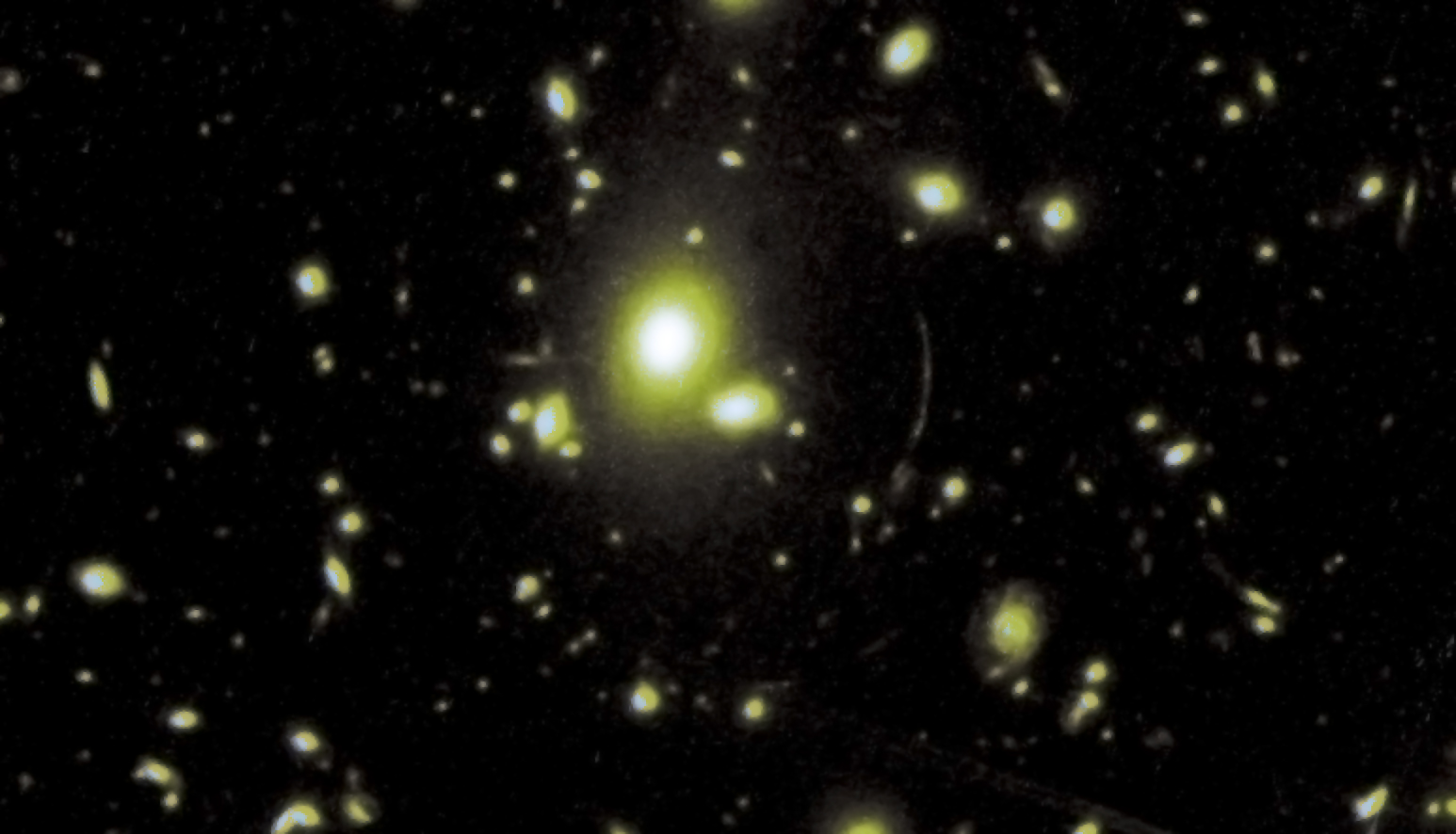An extraordinarily dense region tests the theory of structure formation in the universe
A halo of dark matter six times denser than expected has been found around a cluster of galaxies. This finding shows that there must be very effective mechanisms, not considered until now, for the accumulation of matter around the great structures that populate the universe
According to the most accepted cosmological theory, before the galaxies formed there were already dark matter concentrations that acted as a binder: the gas that would give rise to the first galaxies was concentrated in these lumps of dark matter (a type of matter that does not emit light and only interacts gravitationally), and this type of matter continues to be the majority in galaxies and clusters of galaxies, in the form of enormous haloes around luminous matter. Now, a group of researchers, with the participation of the Institute of Astrophysics of Andalusia (IAA-CSIC), has found a halo of dark matter so dense that shows the existence of mechanisms of growth not considered so far.
"The large-scale structure of the universe is like a kind of spider web in three dimensions, with large voids punctuated by filaments and dense nodes of galaxies and galaxy clusters," says Mauro Sereno, a researcher at the National Institute of Astrophysics (INAF, Italy). Its study is complicated, because the main components of the universe, dark energy and matter, are not known with certainty and ordinary matter, which forms stars and planets, barely constitutes 5% of the total."
In fact, in galaxy clusters, the largest structures in the universe, the proportion of dark and ordinary matter is around 5 to 1. The group of researchers studied a cluster sample to see if, in addition to a known relationship, according to which the very dense regions harbor high mass haloes -and those of lower density host less massive haloes-, there may be other mechanisms, related to the environment of the haloes, that may influence the amount of matter that they contain.
And they found a strange system. "We studied the environment around the PSZ2 G099.86 + 58.45 cluster up to distances of millions of light years and we see that it has a matter density six times greater than we would expect", says Luca Izzo, researcher at the Institute of Astrophysics of Andalusia ( IAA-CSCI) that participates in the work.

The researchers used a technique known as a gravitational lens: the matter of the cluster and its environment, mostly dark matter, deflects the light rays from the background galaxies and acts as a magnifying glass, or a deforming lens. The higher the density of matter, the greater the deformation of the background galaxies, and the study of 150,000 galaxies allowed to determine the density of PSZ2 G099.86 + 58.45, much higher than expected.
"This finding reveals a very rare environment in the current paradigm of structure formation in the universe and implies that, in fact, there are mechanisms of mass increase in large halos that can be very effective," concludes Mauro Sereno (INAF).
M. Sereno et al. "Gravitational lensing detection of an extremely dense environment around a galaxy cluster". Nature Astronomy, July 2018
Instituto de Astrofísica de Andalucía (IAA-CSIC)
Unidad de Divulgación y Comunicación
Silbia López de Lacalle - sll[arroba]iaa.es - 958230532
http://www.iaa.es
http://www-divulgacion.iaa.es

